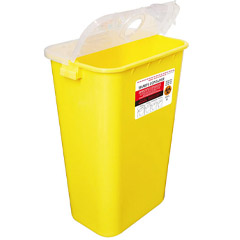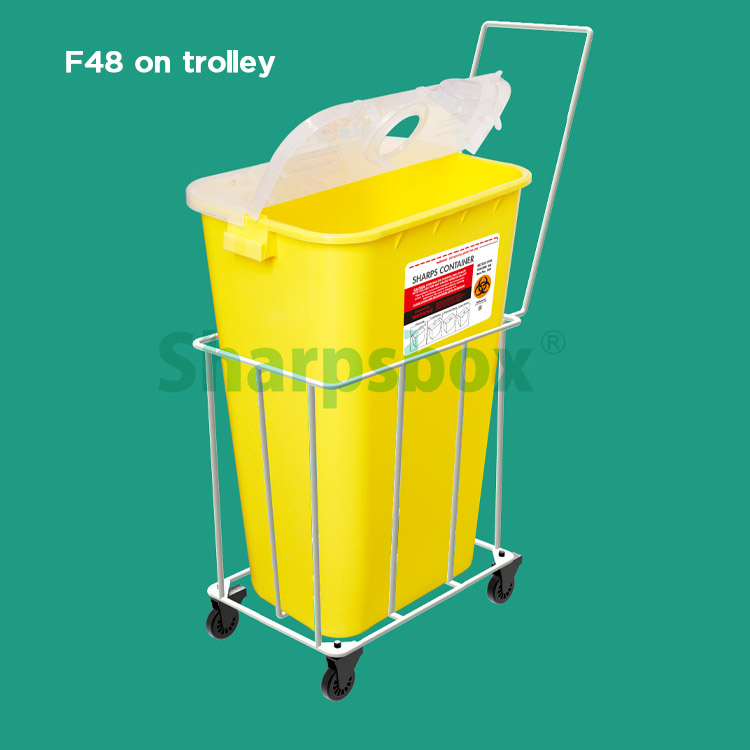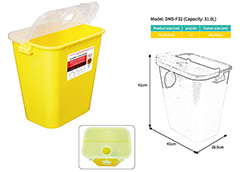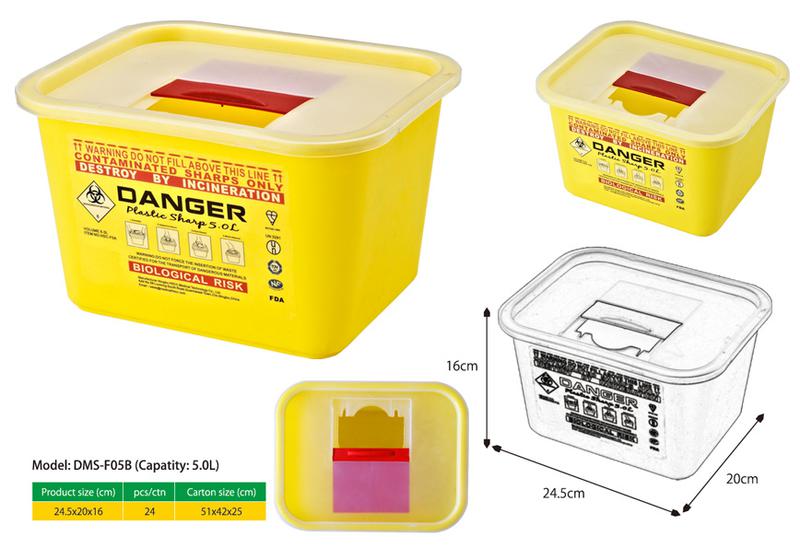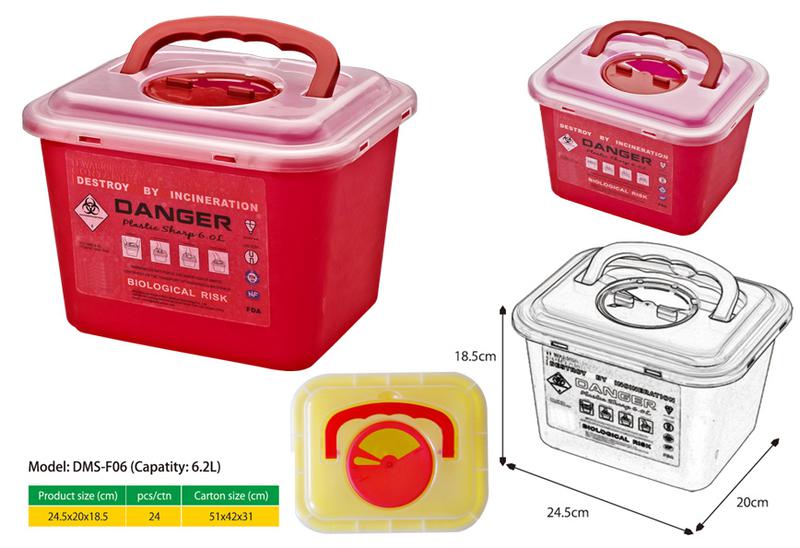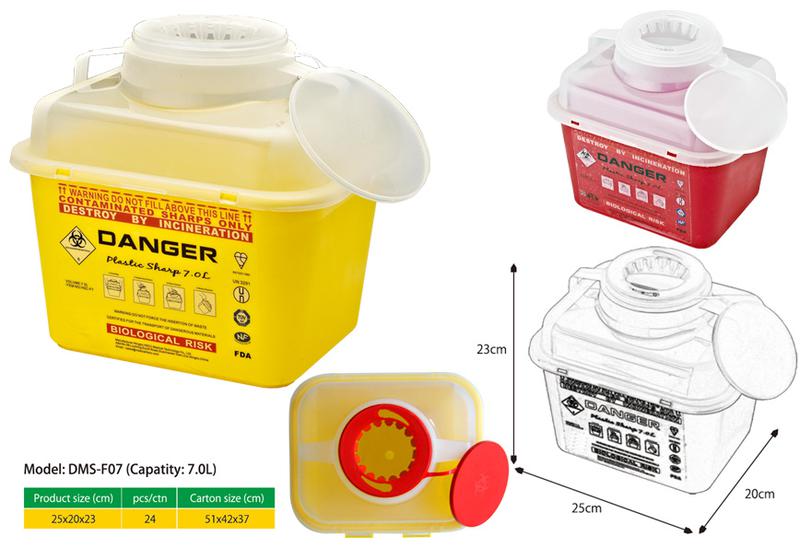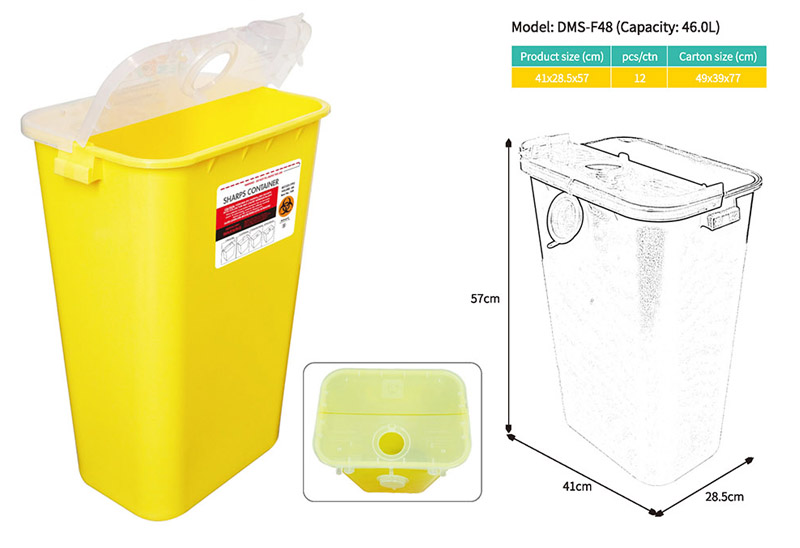

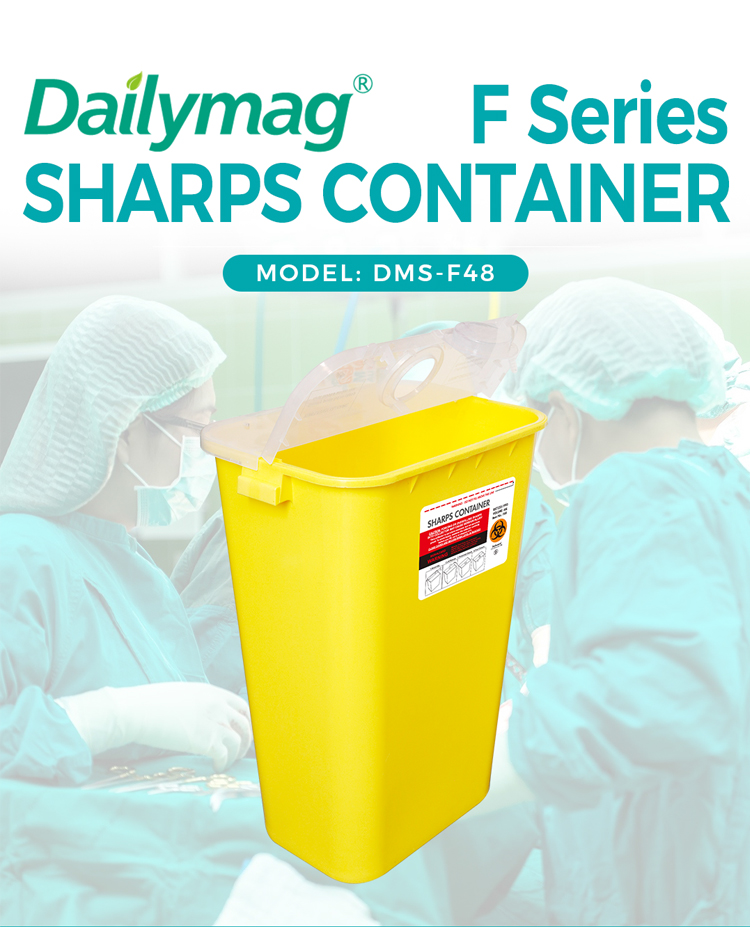
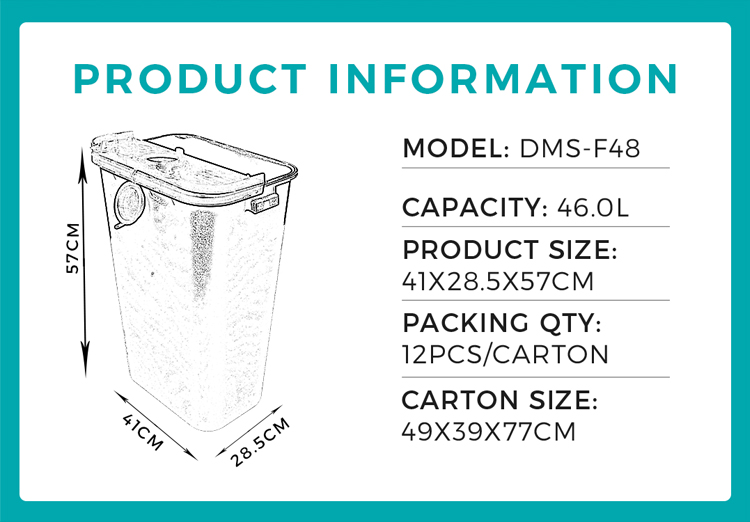
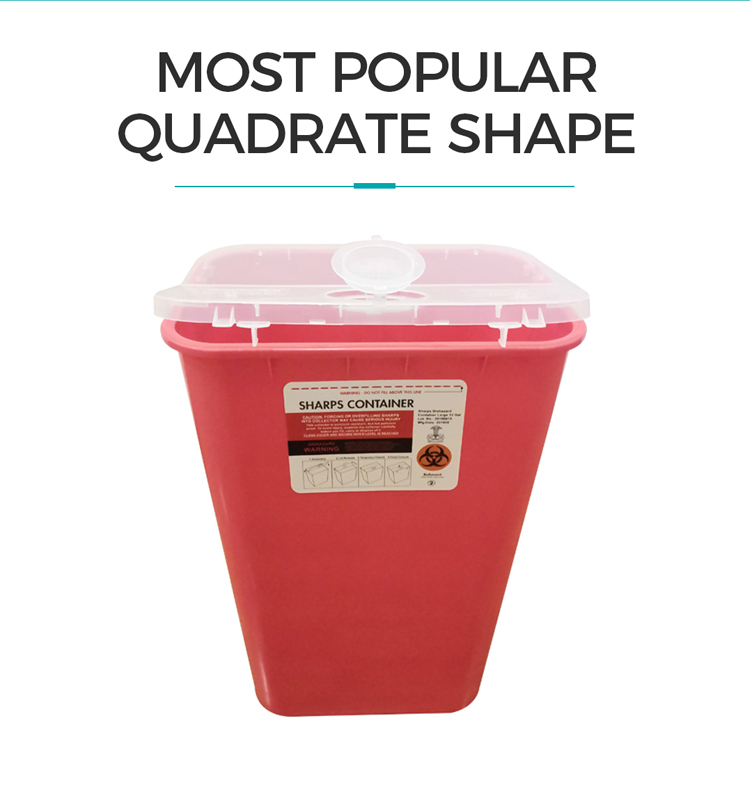
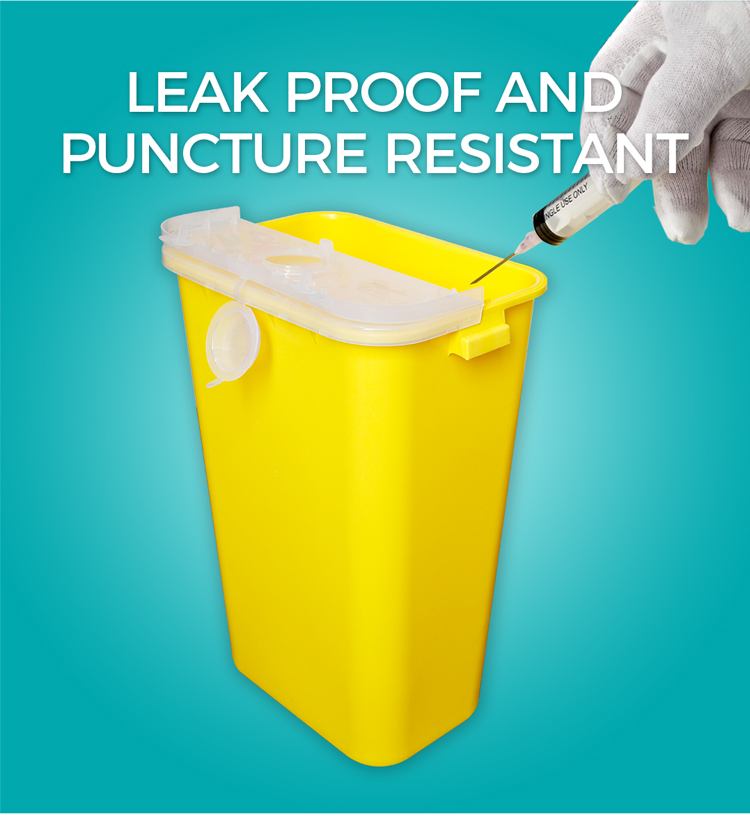
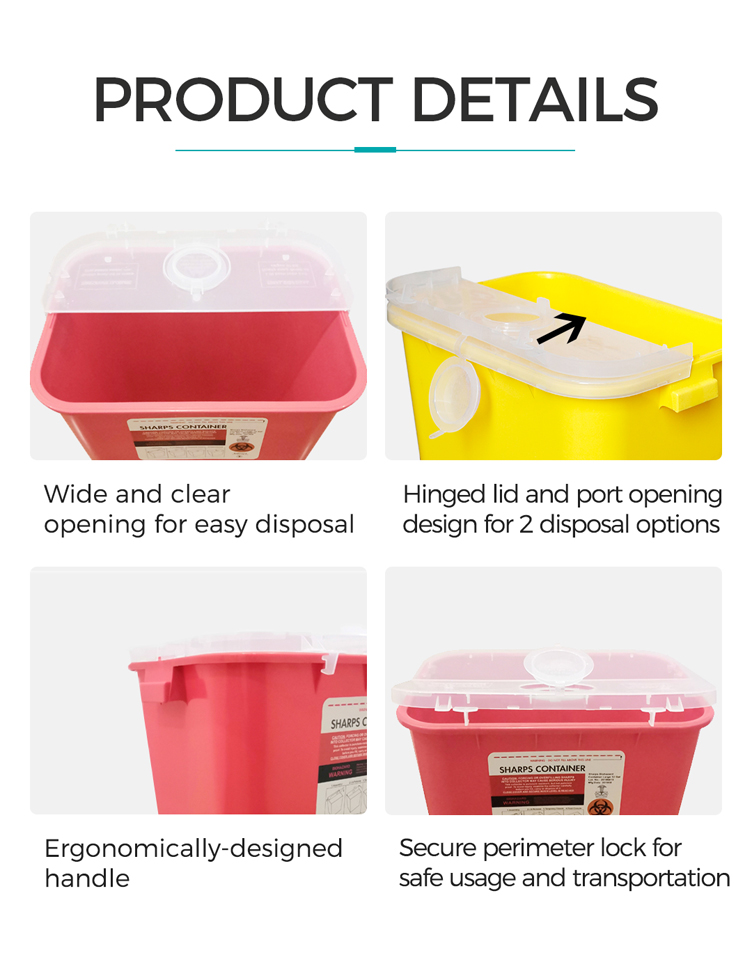
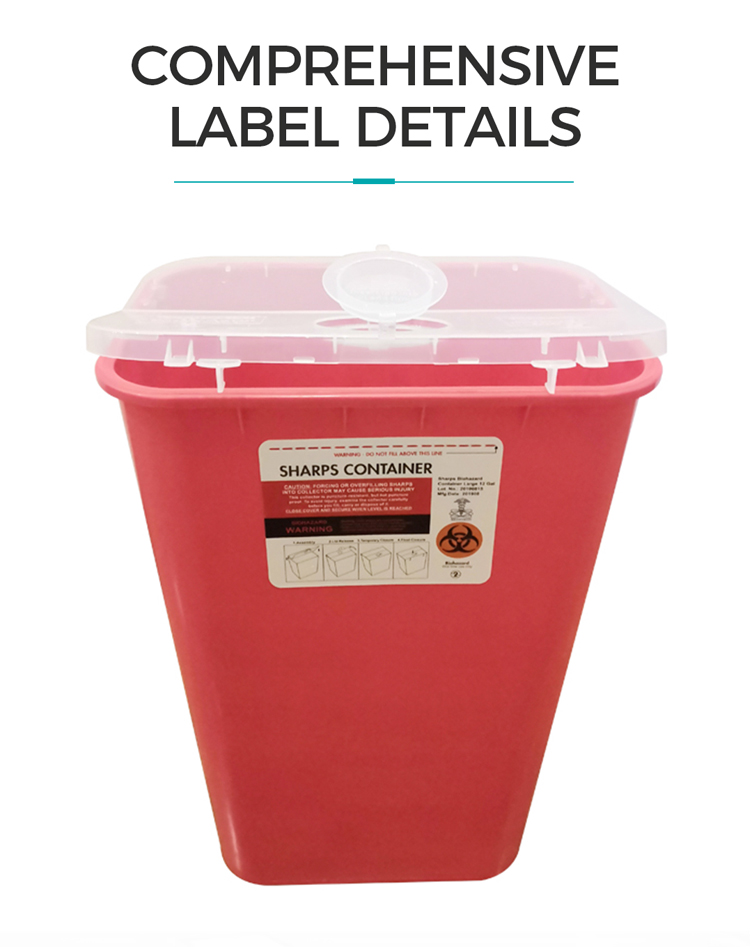
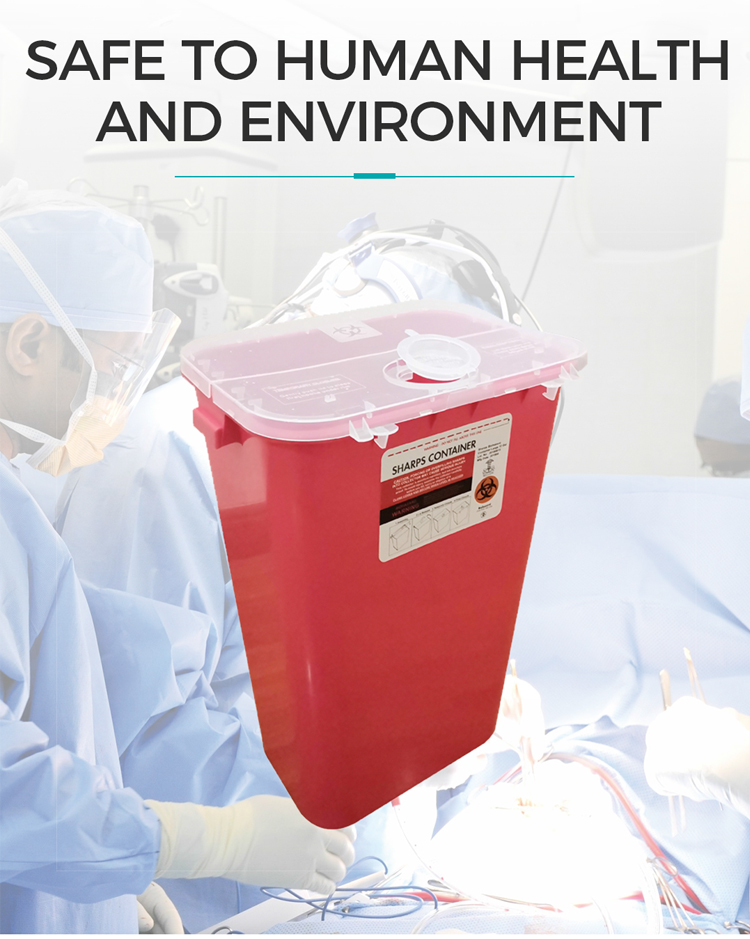
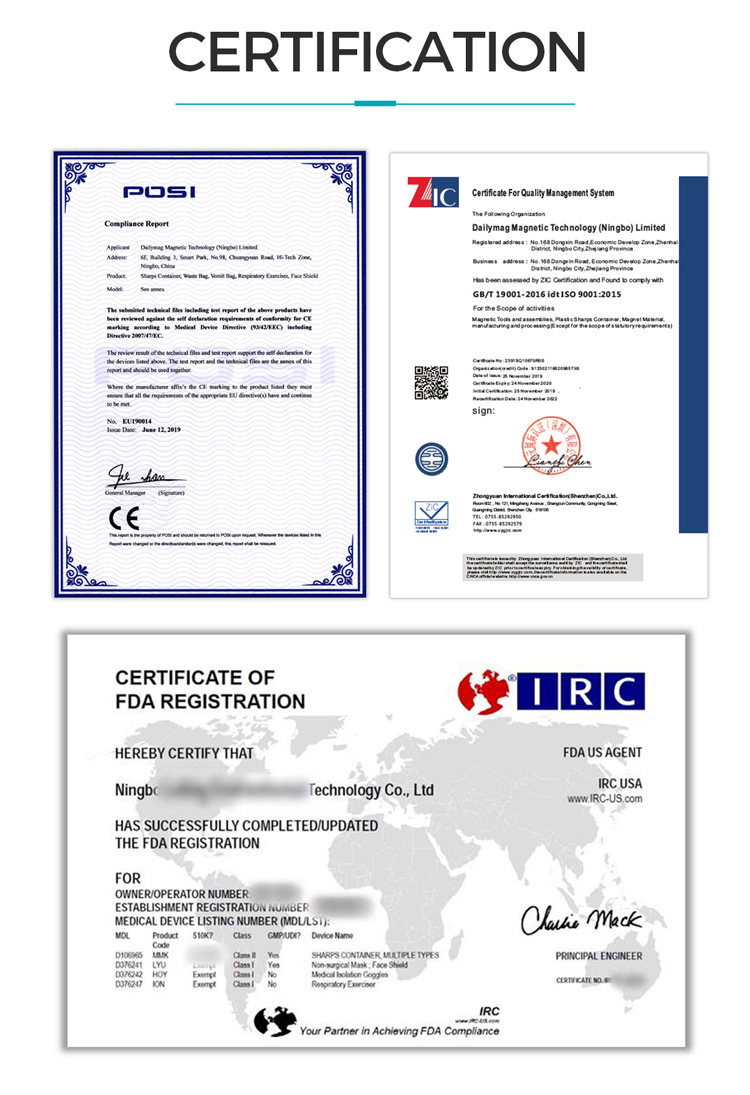
Product Features:
* Most popular quadrate shape
* Leak proof and puncture resistant
* Wide and clear opening for easy disposal
* Counterbalanced door for hand-free disposal
* Ergonomically-designed handle
* Temporary closure & definite closure
* Practical rotating/sliding temporary lid
* Secure perimeter lock for safe usage and transportation
* Easy mainpulation
* Comprehensive label details
* Safe to human health and environment
Comprehensive Products Range
Totaling hundreds of models of sharps containers
New Designs
More than 20 types of new designs every year
Quick Shipment
We have stocks of normal products. Minimium deliery time is 3 days.
High Performance & Low Cost
Let you be very satisfied with the products.
Service Guarantee
Response within 24 hours for all questions.
Plastic Sharps container:
Sharps containers are the boxes that are specifically designed to contain the biomedical sharps waste before their disposal. Biomedical sharps waste is the infectious, injurious, and pathogenic waste that is produced at hospitals, healthcare centers, vaccination centers. Blood collection centers and laboratories. Biomedical waste usually contains hypodermic needles, suture needles. Blades, syringes, broken glass, and ampules. Dailymag manufactures high-quality plastic sharps containers to ensure a high level of protection to the staff handling the sharps. Our containers are designed according to the worldwide accepted Occupational Safety and Health Administration (OSHA) guidelines. Our containers are made of heavy-duty plastic which does not produce harmful gases on incineration. Dailymag sharps containers contain hinged and temporarily locked lids with a small opening. This design does not allow them out throw biomedical sharps contained in the container. Dailymag,s products are very reliable, eco-friendly, and are available in a very affordable price range that does not burdens our costumer’s budget.
According to the OSHA guidelines, properly labeled and color coded plastic sharps containers should be placed at hospital settings so that the sharps are immediately disposed of at the time of their production. It is extremely important to dispose of biomedical sharps waste properly because they are extremely hazardous. Sharps are made in such a way, to make their penetration into the body easy, for certain medical requirements. When sharps once get in contact with a patient’s body fluid, they become infectious. Sharps can either cut or slice the skin or can spread blood-borne infections such as Hepatitis B, Hepatitis C and Immunodeficiency syndrome (AIDS), etc. Therefore, plastic harps containers are of extreme importance. Dailymag provides their customers with high quality plastic sharps containers with certain key features:
- Dailymag plastic sharps containers are made of high quality polypropylene plastic
- Our containers are intact and hard enough to prevent any puncture leakage or spillage.
- The design of containers is kept simple with curved corners to reduce the accumulation of biomedical sharps waste into the corners.
- Proper locked lids with a small opening that allow the safe placement of sharps in the container.
- Its lid does not allow the out-throw of sharp material unless is properly withdrawn from the container.
- Good capacity for containing needles and sharps produced per day at a specific site.
- Remain upright and stable while in use.
- Our containers are properly labeled and color coded (mostly yellow, red, or white color)
Needle-stick injuries are the abrupt or unintentional puncture, wounds, or cuts on first line of defense by infectious sharps I.e., syringes, blades, and needles. According to the US Department of Health and sciences, more than 600,000 to 800,000 people annually got injured by sharps. The Centre of Disease Control also reports that almost 1000 occupational healthcare workers hot needle-stick injuries daily. Most of these sharp based injuries occur during the collection and disposal of waste. A high number of needle-stick injuries occur at operation theaters, surgery rooms, and inpatient units. Almost 80% of the sharps injuries occur by six types of biomedical sharps I.e., , phlebotomy needles, scalpels, suture needles, catheters, syringes, and winged needles. The most at-risk healthcare occupational group is doctors and nurses. After that, the staff members of the waste management team are also at the highest risk because most of them are uneducated and do not know much about the suspected harms of infectious needle-stick injuries. In 1984, the first event of needle stick injury was reported which lead to AIDS in the person. After that, the reported cases started to increase day by day due to which OSHA and other healthcare organizations I.e., Food, and Drug Administration and World Health Organization made serious guidelines for the prevention of such injuries. According to the guidelines of OSHA, all healthcare workers must be immunized free of cost against all the common infections. Moreover. It is reported by WHO that 10% of the sharps-based injuries occur due to the collision of staff during handling of sharps. Hence, sharps must be discarded as they are produced. Most needle-stick injuries occur while recapping the syringes. There are some important precautionary measures that one should practice while handling the sharps.
- Sharps should never be handled, hold or even touch barehanded
- Protectives gloves could be used to protect your hands from the edges of sharps.
- Any procedure that requires the use of sharps I.e., operation, stitches etc should be carried out in proper light.
- The syringes once used, should not be recapped while holding their cap in the hand. Recapping should not be done unless it is highly required.
- Any kind of broken glass container i.e., test tubes, vials, and flasks, etc should not be used to collect or store samples.
Basics for using a Dailymag plastic sharps container:
A plastic sharps container is the most appropriate box to keep the sharps before disposal. One must keep all these basic points in mind while handling plastic sharps containers. Plastic sharps containers are often reusable. These containers must be placed in every ward and operation theater of the hospital and in laboratories to ensure the immediate disposal of sharps. Plastic sharps containers have a certain limit indicator which is almost 3/4 of the whole capacity of the container. After reaching this limit, the container either should be emptied for reuse or it should be sent for its disposal. Biomedical sharps should never be left open in the environment. Sharps larger than the opening of the container, are not supposed to be placed in that container. If any sharp got stuck into its opening, forceps or tongs should be used to pull the sharp out instead of using hands. Precautions should be practiced while handling the needles.
As Dailymag plastic sharps containers are made to place infectious material in them, therefore, these are made either yellow or red with a biohazard sign at its one side to warn the handler. The polypropylene plastic material of our containers is of high grade which makes it puncture or leakage proof from either side of the container. Moreover, is eco-friendly and cost-effective.

